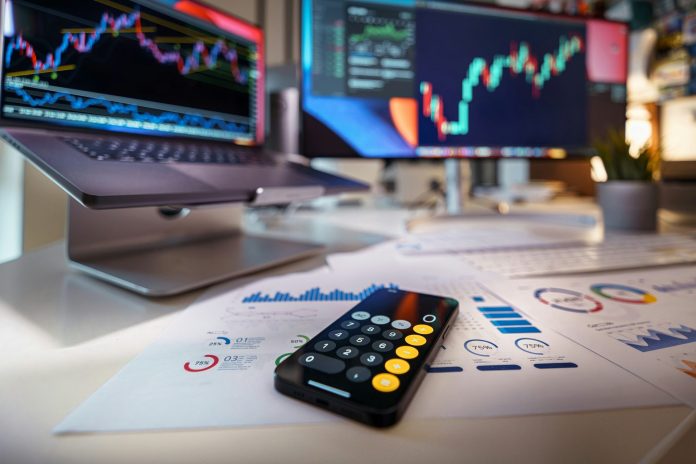Ever wondered how global currencies shift in value or why markets seem to react out of nowhere? Welcome to the world of Forex trading — the massive, fast-moving market where currencies are bought and sold around the clock. With trillions of dollars traded daily, it’s one of the most active arenas in global finance.
But in today’s economic climate — full of uncertainty, shifting trade policies, and central bank surprises — Forex trading isn’t just about speed. It’s about having the right strategies to stay ahead and manage risk wisely.
What Is Forex and How Does It Work?
At its core, Forex trading is about buying one currency and selling another at the same time. These trades happen in pairs — like EUR/USD or CAD/JPY — and their value moves constantly. Why? Because of things like interest rates, inflation, political events, economic reports, and even natural disasters.
Let’s say Canada reports strong employment numbers — chances are, the Canadian dollar (CAD) will strengthen. But if oil prices fall sharply, the CAD might drop, since oil is a key Canadian export. Traders use this type of data to anticipate where the market might go next.
How Indices Help Forex Traders Spot Opportunities
It might seem odd to talk about stock indices in a Forex conversation, but they’re actually an important part of the picture. An index, like Canada’s S&P/TSX Composite, shows how a group of stocks — and by extension, the economy — is performing.
Here’s the connection: when an index falls, it often reflects economic stress. That can put pressure on a country’s currency. For instance, if Canadian manufacturing or oil stocks drop due to new tariffs, the TSX will likely decline — and the CAD might follow suit.
In other words, watching indices can give Forex traders early warning signs before the currency market reacts. It’s not just about stocks — it’s about staying a step ahead.
Risk Management: What Indices Reveal During Market Shocks
Imagine a scenario where trade tensions flare up overnight. New tariffs are imposed, and markets get rattled. Stocks linked to exports — like oil, autos, or farming — start falling. The index drops. And soon after, the national currency weakens.
That’s where indices come in handy. They help Forex traders see the bigger picture.
If you’re trading CAD/USD, spotting a drop in the TSX could be your cue to adjust your position, tighten your stop-loss, or even hedge your trades with tools like currency-hedged ETFs or CFDs that reflect broader market trends. Here you will find the answer for what is indices in trading.
This isn’t just theory — it’s how smart traders avoid being blindsided.
Refining Your Forex Game Plan: Strategies That Go Beyond Charts
Forex has a reputation for being fast-paced — and it is. But winning doesn’t come from chasing every blip on the screen. It comes from building a strategy that blends multiple signals and tools.
Today’s successful traders often combine:
- Technical analysis (price charts, patterns, indicators)
- Fundamental analysis (economic reports, central bank updates)
- Sentiment tracking through indices and sector performance
You’ll also find many using:
- Currency-hedged ETFs to manage volatility
- Sector-specific indices to spot growth or risk areas
- Inverse ETFs as insurance when markets take a dive
These aren’t just tools — they’re part of a risk-managed, diversified trading plan.
Learning to Adapt: Why Education and Awareness Are Key
The Forex market never sleeps. Neither do global headlines. That’s why education isn’t optional — it’s a trader’s best defense.
Traders who understand how different markets influence each other — like how oil prices impact the CAD or how U.S. economic data shakes global confidence — are simply better equipped.
Let’s say oil dips below $60/barrel. For an oil-exporting country like Canada, that could drag down both the stock market and the CAD. But if you’ve been watching the index, you’d likely see it coming and adjust your Forex trades accordingly.
That kind of awareness turns reactive trading into proactive strategy.
Forex Trading Is About Control, Not Luck
It’s easy to think of Forex as a high-stakes gamble — but the pros know it’s more about control, preparation, and discipline.
A strong trader will:
- Always set stop-losses to cap losses
- Follow index performance for economic clues
- Avoid over-leveraging their trades
- Diversify across different currencies and strategies
- Stay updated and reassess based on market news
In fact, real success in Forex often comes from losing less, not winning more. It’s about protecting your capital so you’re ready when the big opportunities come.
Final Thoughts: Navigating Uncertainty like a Pro
These days, the global economy doesn’t sit still. From inflation shocks to trade wars, the landscape is changing fast. That’s why traders need more than instinct — they need insight.
Stock market indices, whether in Canada, the U.S., or abroad, offer powerful signals. They reveal where confidence is building, where money is flowing, and where weakness may be setting in. And for Forex traders, those signals can mean the difference between risky guesses and smart moves.
If you’re just getting started in Forex — or if you’re ready to upgrade your strategy — take a step back and look at the wider market picture. Learn from indices. Use smart tools. Focus on education. And always trade with a plan.
In this market, the better informed you are, the safer — and more successful — your trades will be.



 Bitcoin
Bitcoin  Ethereum
Ethereum  Tether
Tether  XRP
XRP  Solana
Solana  USDC
USDC  TRON
TRON  Cardano
Cardano  Lido Staked Ether
Lido Staked Ether  Avalanche
Avalanche  Toncoin
Toncoin